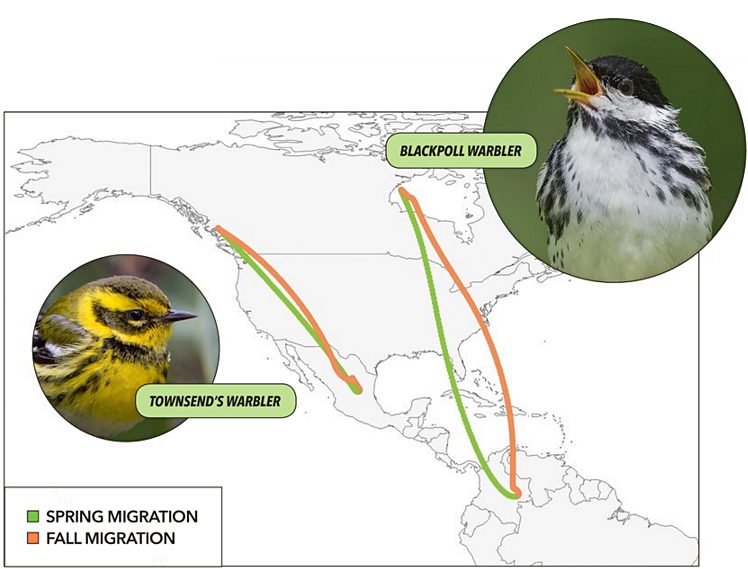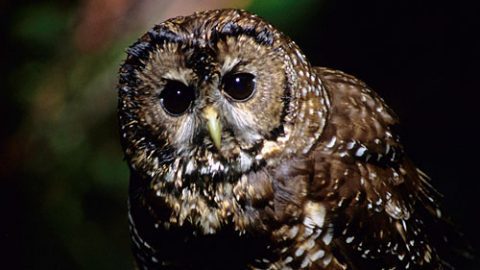Some Birds Ride the Wave for Spring Migration: Watch a Mesmerizing Migration Map of 118 Bird Species
By Pat Leonard
April 15, 2016
For the first time, scientists at the Cornell Lab of Ornithology have documented the migratory movements of bird populations for 118 species throughout the Western Hemisphere. The study— which used millions of observations from the eBird database and was published in January in the Proceedings of the Royal Society B: Biological Sciences—finds that migration routes are determined by factors on the land and in the air.
“After tracing the migration routes of all these species, we concluded that a combination of geographic features and atmospheric conditions influence the choice of routes used during spring and fall migration,” says lead author Frank La Sorte, a research associate at the Cornell Lab.
The study found that some migratory bird species head out over the Atlantic Ocean during fall migration to take a direct route to their wintering grounds in South America (see “A Migratory Flight Path Over the Atlantic,” Autumn 2015). For the return journey in spring, these birds take a different route farther inland (see Blackpoll Warbler route above). These birds move faster in spring, thanks to strong tailwinds as they head north to their breeding grounds.
“By shifting migration routes inland in the spring, our work suggests migrants are able to increase migration speed, which may compensate for the longer journey,” says La Sorte.
For species that do not fly over the open ocean in autumn, the study finds that many use the same migration routes in the spring and fall. Geographic features shape these straight-line migration patterns—mountains or isthmuses funnel migrants along narrow routes. For example, many western migratory species fly along mountain chains to avoid the arid basins where food and shelter are scarce (see Townsend’s Warbler route above).
“It’s an exciting new area of research,” says La Sorte. “By using eBird data and other forms of migration tracking information, we’re getting a more detailed picture than ever before about where and when birds migrate.”

All About Birds
is a free resource
Available for everyone,
funded by donors like you
American Kestrel by Blair Dudeck / Macaulay Library



